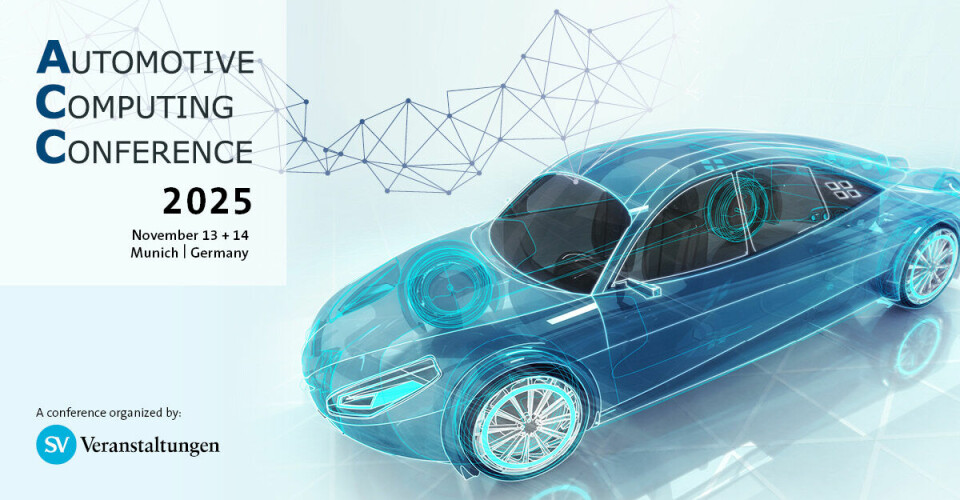Software Defined Vehicles
Interview with Dr Chantal Himmels, BMW, and Robert Siwy, BMW
“Driving simulators have emerged as indispensable development tools”

As vehicles become more software-defined, advanced virtualization and driver-in-the-loop simulation are transforming how new functions are developed and validated. BMW’s Dr Chantal Himmels and Robert Siwy discuss how human-centered simulation accelerates innovation and ensures safety.
With their combined expertise in psychology, software engineering, and virtual testing, Dr Chantal Himmels and Robert Siwy are shaping how BMW develops and validates next-generation driving functions. Dr Himmels bridges human perception and software behavior – experience she gained through her work in ADAS development at Daimler Trucks and as a lecturer in computer science. Siwy, a seasoned software manager and widely published expert on embedded and AUTOSAR systems, brings deep technical insight into simulation-driven software validation.
Together, they explore how virtual development and driver-in-the-loop environments can make future vehicle systems safer, faster, and more user-centric. At the upcoming Automotive Computing Conference 2025, they will deliver a joint keynote on “Driver in the Loop – Testing the Driver’s Software Experience.” We spoke with them ahead of the event and asked three questions they answered together.
ADT: Virtual development environments are becoming essential for modern vehicle design. From your perspective, what role does driver-in-the-loop simulation play in ensuring a realistic evaluation of software-based driving functions?
Dr Himmels and Siwy: To develop the best possible product, the future customer should be incorporated into the development process rather than bringing a product to market and then finding out that it is not what the customer wants. To this end, we must make tomorrow’s technologies experienceable today. In this context, driving simulators have emerged as indispensable development tools. Simulators allow us to investigate safety of use, controllability, and usability as soon as we have our first product concept. This way, simulators can accelerate our development process on the one hand and on the other hand allow us to conduct investigations that would otherwise be impossible. In real-world testing conditions, driving functions largely depend on the surrounding traffic, which makes it difficult to draw general conclusions regarding system design from naturalistic driving data. Meanwhile, test vehicles cannot be driven by non-BMW experts. With our driving simulation center, we can invite our customers to experience our new systems and deliberately induce particularly those scenarios within the context of our new software that we consider interesting.
At the ACC 2025, you’ll explore the idea of “testing the driver’s software experience.” What exactly does that mean, and how does this approach help bridge the gap between virtual testing and real-world perception?
Driving simulators are not about testing hardware. That can be done more easily in hardware-in-the-loop (HiL) setups. Software alone should not be tested in the driving simulators either, since there are more efficient means for this purpose as well, such as software-in-the-loop (SiL) environments. What we do need driving simulators for is testing concepts. Insights from these concept evaluations are then incorporated into our software development process, for instance in advanced driver assistance systems (ADAS), human–machine interface (HMI) development, or driving dynamics. To write the best possible software, it is not only relevant to test user flows and functionality in isolated setups, but automotive software in particular should be tested directly in the driving situation. Hence, we are not only testing software in our driving simulators, but also how the driver experiences our software solutions.
Within BMW’s virtualization strategy, driving simulators have evolved into powerful development tools. How do they contribute to faster iteration, higher safety, and a more human-centered approach to software validation?
On the one hand, testing with real vehicles is naturally only possible when the first hardware prototypes already exist, hence late in the development process. In our driving simulators, we can make future functions experienceable quite easily on a functional level, without requiring any physical prototypes. After the initial concept evaluation phase, we can also integrate series software into the driving simulator, meaning applications running on target hardware and software. Customer feedback can thus be collected throughout the entire development process, enabling truly user-centered development. Regarding safety, driving simulators enable us to conduct investigations that could not be performed in the real world because they would be too dangerous. Examples of such risky scenarios include driver reactions to critical system errors, such as the emergency brake assist not triggering, or triggering falsely. In this way, studies conducted in the driving simulator have already enabled system homologation in the past, although simulator studies must of course always be complemented by real-world results when decisions involve significant risk.


